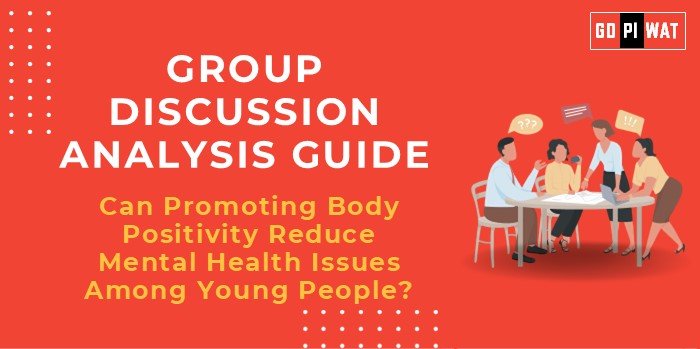📋 Can Promoting Body Positivity Reduce Mental Health Issues Among Young People?
🌐 Introduction to the Topic
Context Setting: “The rise of social media has amplified unrealistic beauty standards, leading to increasing mental health challenges among young people. Body positivity, as a movement, aims to counteract these effects by encouraging self-acceptance and inclusivity.”
Topic Background: The body positivity movement originated in the 1960s but gained momentum in the 2010s with social media advocacy. It challenges societal norms around beauty and emphasizes mental well-being.
📊 Quick Facts and Key Statistics
- 🌍 Mental Health Impact: 20% of young people report body image as a primary contributor to anxiety and depression (WHO, 2023).
- 📱 Social Media Influence: 72% of teens feel pressured to look good due to online comparisons (Pew Research, 2023).
- 🌎 Global Movement: #BodyPositivity has over 10 billion views on TikTok (2024).
- 💰 Economic Influence: Beauty and wellness industry worth $600 billion globally, often promoting narrow beauty standards (Statista, 2023).
👥 Stakeholders and Their Roles
- 🏫 Educational Institutions: Incorporate mental health programs and body positivity campaigns in curricula.
- 📱 Social Media Platforms: Regulate content promoting unrealistic beauty standards.
- 💊 Healthcare Providers: Offer support and counseling focused on body image issues.
- 👪 Parents and Guardians: Educate young people on self-esteem and body neutrality.
📚 Achievements and Challenges
Achievements:
- ✨ Global campaigns like Dove’s “Real Beauty” have increased awareness.
- 📖 Schools introducing self-esteem workshops (e.g., UK’s Body Confidence Initiative).
- 📱 Influencers promoting diverse body types gaining traction on social media.
Challenges:
- ⚠️ Persistent pressure from beauty-centric advertisements.
- 🔍 Rising cosmetic surgery rates among teenagers.
- 🌍 Global Comparison: Countries like Norway mandate disclaimers on retouched images, a step yet to be widely adopted elsewhere.
Case Study: In 2022, New Zealand schools implemented body confidence programs, leading to a 15% decrease in reported teenage body image issues.
🗨️ Structured Arguments for Discussion
- ✅ Supporting Stance: “Promoting body positivity helps young people build resilience against societal pressures, reducing mental health issues like anxiety and depression.”
- ❌ Opposing Stance: “Body positivity alone cannot address deeply rooted mental health issues; systemic changes and professional support are essential.”
- ⚖️ Balanced Perspective: “While body positivity is a powerful tool, its impact must be complemented by broader mental health policies and societal reforms.”
🌟 Effective Discussion Approaches
- 💡 Opening Approaches:
- 📊 Start with a statistic: “With 20% of young people citing body image as a mental health trigger, addressing this issue is critical.”
- ❓ Pose a question: “Can celebrating diverse body types truly challenge ingrained societal norms?”
- 📚 Use a case study: “In Norway, mandating disclaimers on retouched ads has sparked a global debate on regulating beauty standards.”
- 💬 Counter-Argument Handling:
- Example: “While body positivity is essential, critics argue it ignores deeper insecurities. A balanced approach involves promoting mental health awareness alongside body positivity.”
📈 Strategic Analysis of Strengths and Weaknesses
- ✅ Strengths: Raises awareness; promotes inclusivity; challenges beauty norms.
- ⚠️ Weaknesses: Risk of over-simplification; limited reach among vulnerable groups.
- 🌟 Opportunities: Collaborations with mental health organizations; integration into policies.
- ⚡ Threats: Resistance from industries profiting from beauty standards.
🎓 Connecting with B-School Applications
- 🌍 Real-World Applications: Linking to marketing ethics, organizational culture, and public health initiatives.
- 💬 Sample Interview Questions:
- “How can body positivity campaigns influence consumer behavior?”
- “Evaluate the effectiveness of social media in promoting body positivity.”
- 📘 Insights for B-School Students: Importance of corporate social responsibility, mental health-friendly workplaces, and ethical advertising.


